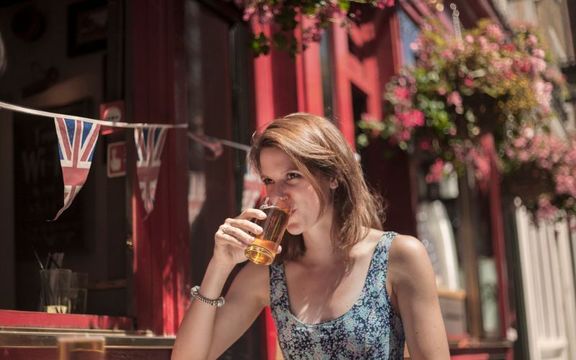
The Pub Lover's Guide to LondonGetty
Here we share an extract from "The Pub Lover's Guide to London" by Callum Moy - we hope you enjoy!
Metropolitan London has around 7,000 public houses – an average of 25 pubs per square mile. No other capital city in the world matches this density. It’s not surprising that the London pub is such an institution at home and abroad!
Pubs take their name from being private houses licensed to sell beer to the public. Licensing them was a job creation scheme introduced when unemployment was high after victory in the Napoleonic Wars and the troops demobbed. The Beerhouse Act 1830 was introduced by the Prime Minister of the day, and victor at the Battle of Waterloo, the Duke of Wellington. It permitted anyone to apply for a license to brew and sell beer from their home – from a public order perspective, it wasn’t an entirely satisfactory situation!
Alcohol consumption has been around long before 1830. From the Georgian period (i.e., 1714–1830) its basic form was an alehouse selling only beer. An upgrade was the tavern, having a wider range of drinks such as wine, and a meal. And a coaching inn was a popular station to rest, feed and water horses during a long journey.
The Glorious Revolution in 1688 introduced gin from Holland – the favourite tipple of the new Dutch King William III of England. War with France had restricted the supply of wine and, in any case, its consumption was seen as unpatriotic. With gin, alcohol acquired its negative reputation – as compared to good old ‘healthy’ beer, immortalised by Hogarth‘s satirical prints: ‘Gin Lane’ and ‘Beer Street’. Port was also introduced around this time by Portuguese allies in Lisbon.
Pubs were part and parcel of the expansion of London – the population of London grew to six million in 1900 (from only one million a hundred years earlier). Acting as accommodation for the navvies and construction workers, pubs were often the first building in a development – accounting for why so many are located on corners, being an edge of the plot.
Because pubs are ubiquitous in the capital, a pub can always be found near a place of historical significance. This book selects some key moments in the history of London, from Roman times to the modern day, and suggests a popular pub nearby to savour the moment – reliving the history with a drink in hand! It is hoped the reader will visit many of the locations and in so doing experience not only some of London’s best pubs, but also see where the principal historical events took place.
Read more
A dynasty is born
During the fifteenth century, London’s merchants and elite supported the Yorkists in the infamous Wars of the Roses. So, in 1485, somewhat ‘cap in hand’ they greeted the victor of the Battle of Bosworth Field, the Lancastrian Henry Tudor – soon to become King Henry VII. Henry settled in Greenwich and embellished an existing manor house to create the Palace of Placentia – the future place of birth of Henry VIII, Mary I and Elizabeth I.
The palace has gone, but on its site Wren designed the Royal Naval Hospital, Greenwich (at the instruction of Queen Mary II) opening in 1694 to house injured and aged sailors. The hospital remained for nearly 200 years, until becoming the Royal Naval College in 1873 and then from 1998 Greenwich University. You may recognise its buildings from many films, most notably Les Misérables in 2012. Highlights include Thornhill’s Baroque Painted Hall (that hosted the lying-in-state of Lord Nelson in 1806) and the National Maritime Museum – an exposition of Britain’s seafaring past.
Greenwich is steeped in history. On the hill overlooking the Thames is the Royal Observatory, sponsored by King Charles II, and the Meridian Line – the Prime Meridian of the world designated to be zero longitude. The Queen’s House (completed in 1636) is the first truly classical building in England. With its uninterrupted views of the river, Inigo Jones worked on the project for over 20 years, first for James I and then his son Charles I – each gifting the house to their queens.
Near Greenwich Market (an eclectic open-air market) the record-breaking 1869 tea clipper Cutty Sark can be visited in dry dock. Famed for its speed that enabled traders to secure top prices in London for the first crop of tea from China, or wool from Australia, it was state-of-the art engineering that enjoyed a glittering career, before its sleek lines were made redundant by the opening of the Suez Canal and the arrival of steam-powered ships.
The Trafalgar Tavern has an enviable riverside location, to the east of the busy throng of visitors that descend on Greenwich for many weekends of the year. Plentiful internal and outside space ensures seating after visiting the spectacles of maritime Greenwich. Separate dining rooms are adorned with artefacts and paintings telling the story of Britain’s great naval history – allowing one to contemplate the royal connections, naval importance and trading wealth brought to London via Greenwich.





Comments